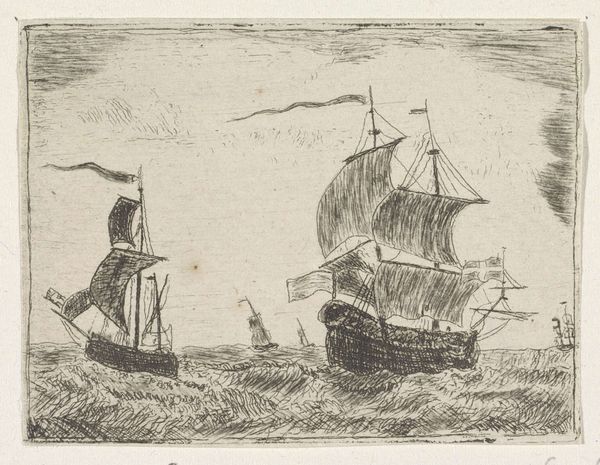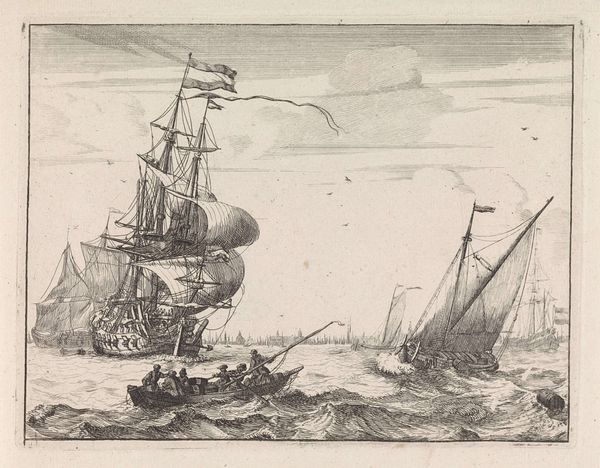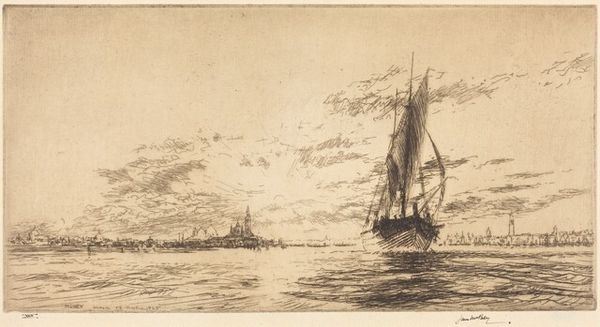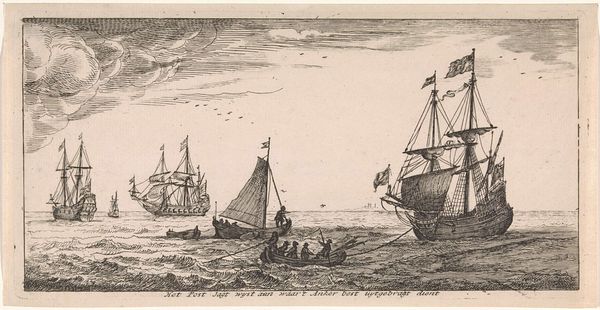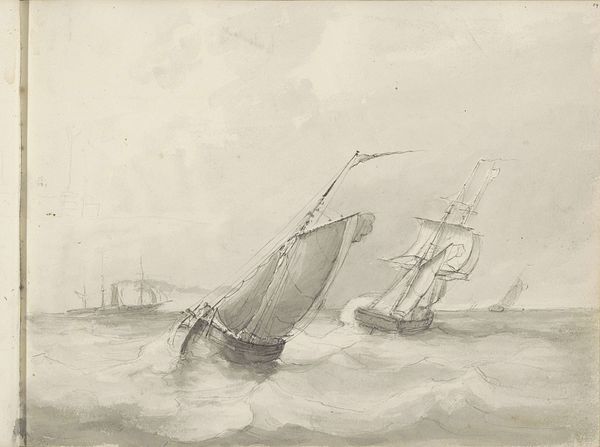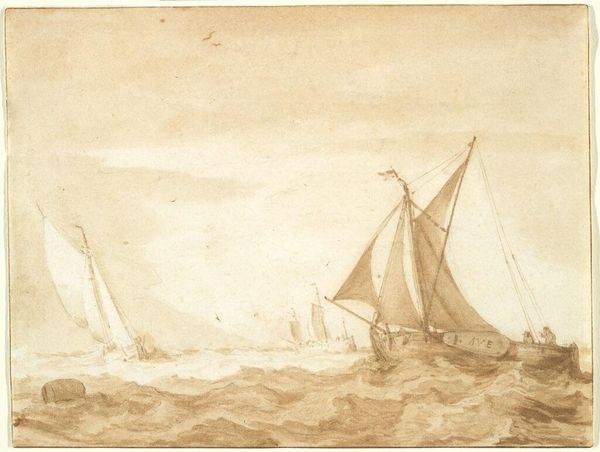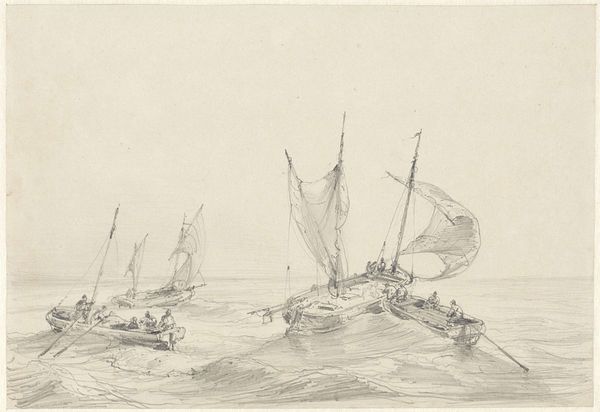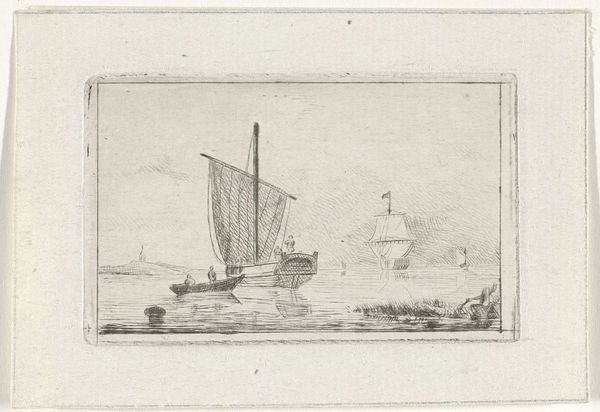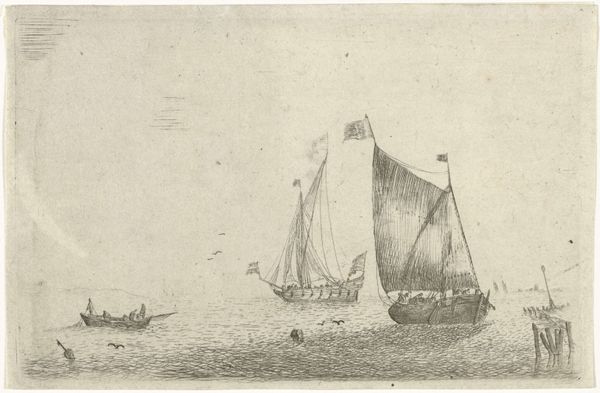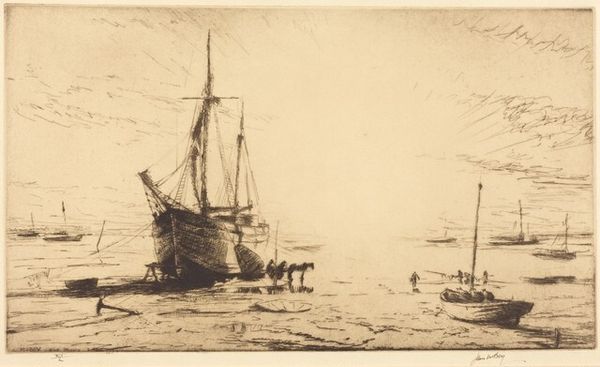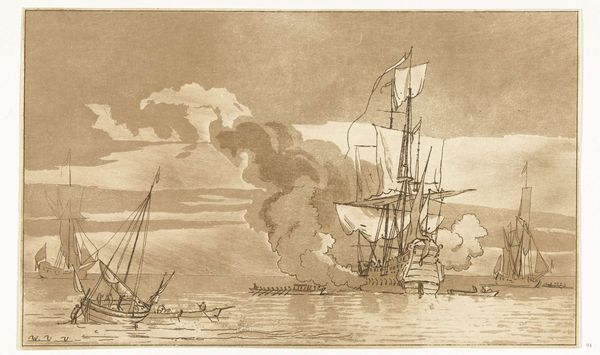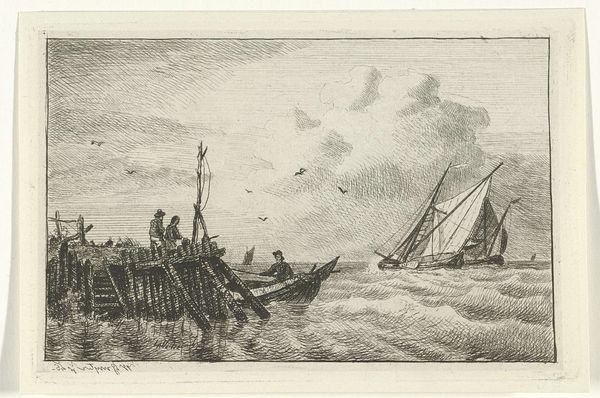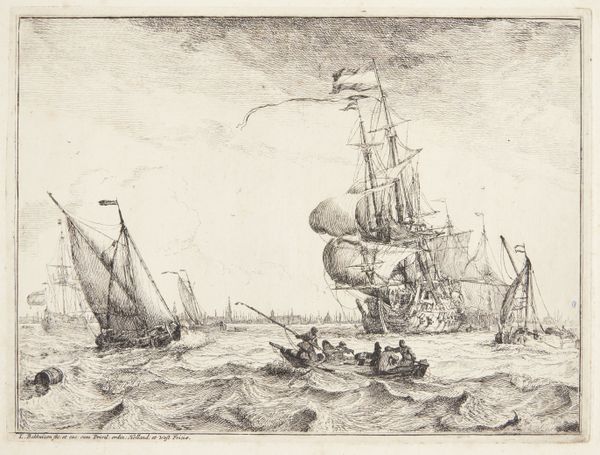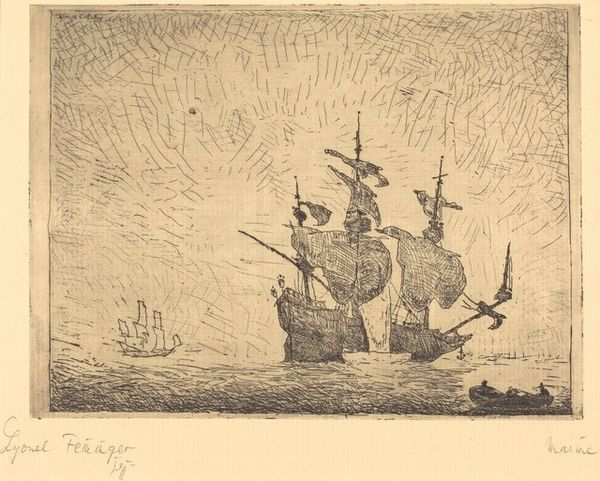
print, etching
#
narrative-art
# print
#
etching
#
landscape
#
history-painting
#
realism
Copyright: National Gallery of Art: CC0 1.0
Curator: The light in this etching is captivating. There’s a soft glow to it that reminds me of memory. Editor: It’s fitting, considering the work by James McBey is entitled "Palos - Departure of Columbus, 1492". He made it in 1932, several centuries after the fact, using the very physical process of etching to revisit this pivotal historical moment. Curator: Etching lends itself so well to historical narratives, doesn’t it? It’s all lines and shadows, like whispers from the past. It makes me wonder what McBey felt about Columbus’s voyage while making it. Do you think he romanticized it, saw the darker aspects? Editor: I see a critical ambivalence, especially in how the ships dominate the frame while the figures onshore seem shrouded, almost swallowed by the earthiness. Consider the labor involved in etching this scene, each line painstakingly inscribed. It’s a slow, deliberate engagement with a history built upon similar acts of demanding labor. Curator: So true, all those tiny lines coming together to form a cohesive whole! Like a ship being constructed plank by plank! It's odd, but those rough lines along the shore remind me of restless thoughts right before embarking on an exciting journey, the quiet chaos within the characters. Editor: I see it, yes. And look at the material reality – the copper plate itself, the acid used to bite the lines, the paper it's printed on. Each element plays a role in communicating this version of a departure—not as a singular heroic action, but as part of continuous flows of global exchange and exploitation. Curator: Exploitation but also aspiration, no? Because I think as I contemplate McBey rendering it so many years later, it must hold an ambivalent sentiment toward what happened, a past with no return... But as you pointed out it definitely shows the physical reality of labor... It gives me the oddest sensation! Editor: Indeed. The etching's starkness almost becomes a moral commentary, devoid of grandeur but laden with material consequence. It’s an aesthetic paradox. Curator: I feel now that as we are wrapping this, it reflects that, like history itself, our interpretations will vary but the essence, that initial awe when encountering a grand tale, is what endures in my soul, I suppose. Editor: Absolutely. And, perhaps it also endures in the weave of the paper, the grain of the wood used for the press – physical echoes of a moment perpetually departing.
Comments
No comments
Be the first to comment and join the conversation on the ultimate creative platform.
